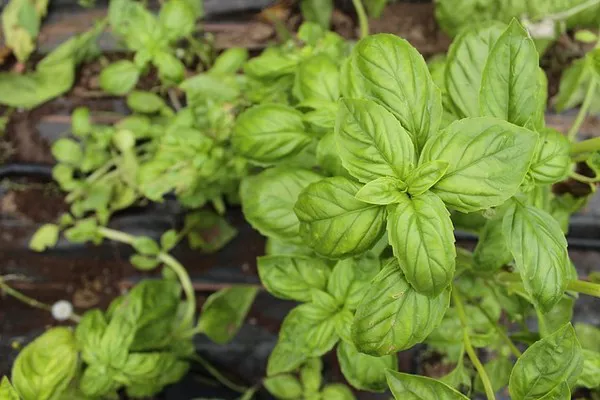White spots on plants can be a cause of concern for gardeners and plant enthusiasts alike. These spots not only detract from the aesthetic appeal of the plant but can also indicate underlying issues that need to be addressed promptly to ensure the plant’s health and vitality. Proper diagnosis is crucial in effectively treating the problem and restoring the plant to its former glory.
White spots on plants are a common phenomenon that can be caused by various factors ranging from fungal diseases to environmental stressors. Identifying the exact cause of these spots is essential for implementing appropriate treatment strategies. Failure to diagnose the issue accurately can result in ineffective treatment and further deterioration of the plant’s health.
Common Causes of White Spots on Plants
1. Powdery Mildew: Powdery mildew is a fungal disease characterized by white powdery patches on the leaves, stems, and buds of plants. It thrives in humid conditions with poor air circulation, making it prevalent in greenhouses and crowded gardens.
2. Downy Mildew: Unlike powdery mildew, downy mildew appears as yellow or white spots on the upper surfaces of leaves, often accompanied by a fuzzy, grayish growth on the undersides. This disease favors cool, damp environments and can be particularly devastating to crops like grapes and cucurbits.
3. Pests: Various pests, including mealybugs, scale insects, and spider mites, can cause white spots on plants by feeding on their sap or secreting substances that disrupt photosynthesis. Mealybugs, for example, leave behind white, cottony masses on the plant surface, while spider mites create fine webbing and stippling on the leaves.
4. Sunburn: Excessive exposure to sunlight can lead to sunburn in plants, resulting in white or bleached spots on their leaves. This is especially common in young or newly transplanted plants that have not yet developed a protective layer of cuticle.
5. Mineral Deposits: Hard water or excessive use of fertilizers can lead to the accumulation of mineral deposits on plant leaves, causing white spots to form. These deposits often appear as crusty or powdery residue and can interfere with the plant’s ability to absorb nutrients and water.
6. Other Potential Causes: Less common causes of white spots on plants include edema, which occurs when plant cells swell and burst due to excessive moisture uptake, and herbicide damage, which can manifest as white or yellow spots on foliage following exposure to certain chemicals.
Diagnosing the Cause
Differentiating between the various causes of white spots on plants can be challenging but is essential for effective treatment. Observation of the spots’ appearance, distribution, and accompanying symptoms can provide valuable clues to their underlying cause. Additionally, considering factors such as the plant species, growing conditions, and recent changes in environment can help narrow down the possibilities.
Using magnifying glasses or consulting with knowledgeable professionals can aid in accurate diagnosis, especially when dealing with microscopic pests or subtle symptoms. Prompt and accurate identification of the issue allows for timely intervention, minimizing the risk of further damage to the plant.
Treatment Options
1. For Fungal Diseases: Fungicides containing active ingredients such as sulfur, copper, or potassium bicarbonate can help control powdery and downy mildew. Alternatively, organic remedies like neem oil or baking soda solutions may offer effective and eco-friendly options for managing fungal infections.
2. For Pests: Insecticidal soaps, horticultural oils, and botanical insecticides can be used to combat pest infestations while minimizing harm to beneficial organisms. Encouraging natural predators like ladybugs and lacewings can also help keep pest populations in check.
3. For Sunburn: Providing shade to susceptible plants or relocating them to a more sheltered location can prevent further sunburn damage. Additionally, watering plants during the cooler parts of the day and mulching around their base can help retain soil moisture and reduce stress from heat.
4. For Mineral Deposits: Gently wiping the affected leaves with a damp cloth or sponge can remove superficial mineral deposits without causing damage to the plant. Using distilled or rainwater for irrigation can help prevent future buildup of minerals in the soil and on the plant surface.
5. General Plant Care Tips: Maintaining proper watering practices, ensuring adequate humidity levels, and promoting good air circulation are essential for preventing stress-related issues like sunburn and mineral buildup. Regularly monitoring plants for signs of distress and addressing any issues promptly can help maintain their overall health and resilience.
Preventing White Spots
Proactive measures can be taken to minimize the risk of white spots appearing on plants:
Choose resistant plant varietiesthat are less susceptible to common fungal diseases and pest infestations.
Ensure adequate spacing between plants to promote airflow and reduce humidity levels, which can discourage fungal growth.
Mulch around plants to help regulate soil temperature and moisture levels, reducing the risk of stress-related issues like sunburn and edema.
Monitor plants regularly for signs of pests or diseases, and take prompt action to address any issues before they escalate.
Practice proper sanitation measures, such as removing and disposing of infected plant material, to prevent the spread of diseases.
Conclusion
Accurate diagnosis and timely treatment are paramount when dealing with white spots on plants. By understanding the various causes of these spots and implementing appropriate preventive and remedial measures, gardeners can effectively maintain the health and vitality of their plants. Regular observation, proper plant care, and proactive pest and disease management are essential components of a successful gardening strategy. For complex or persistent issues, seeking assistance from experienced professionals can provide valuable guidance and support.


